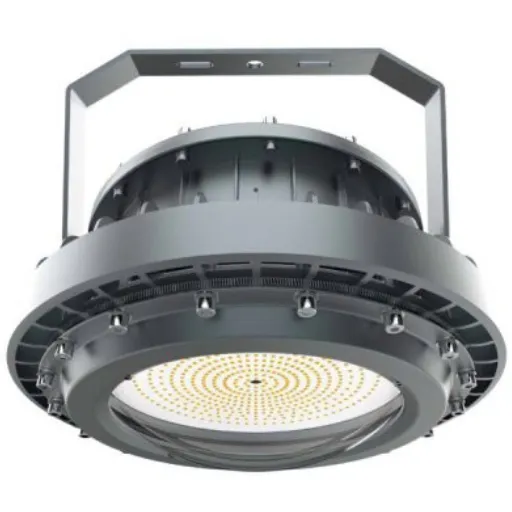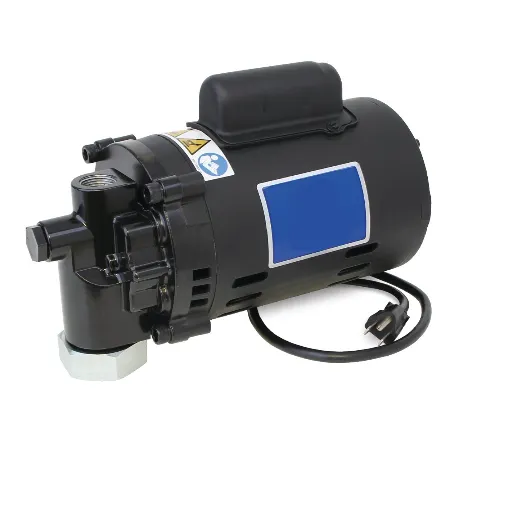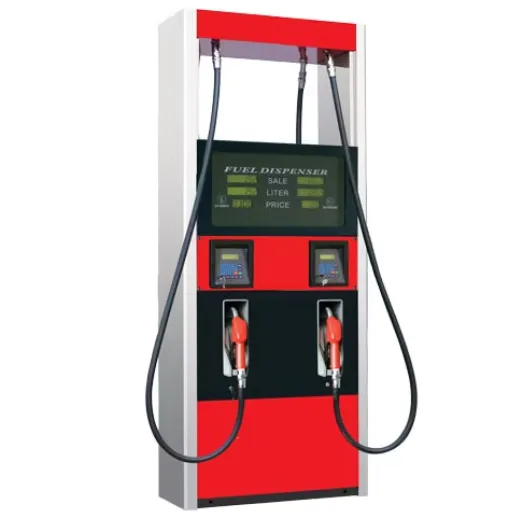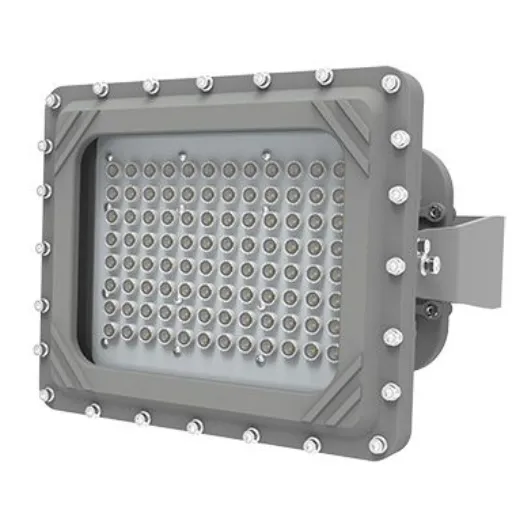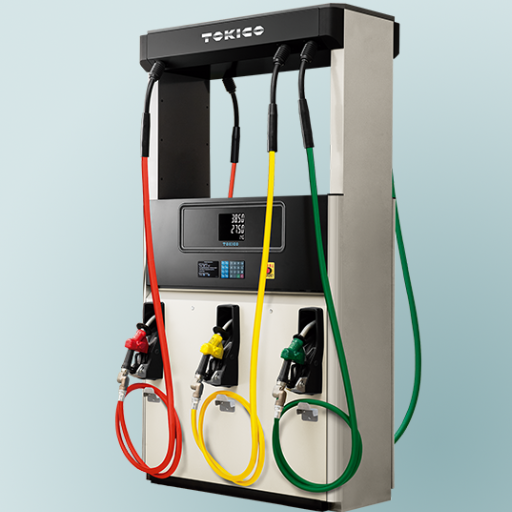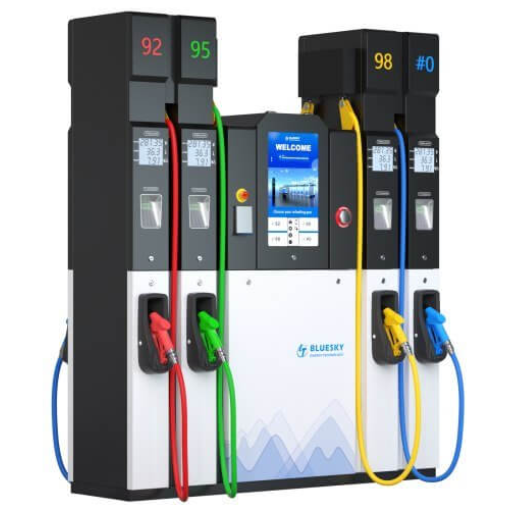The worldwide issue of corrosive damage to steel tanks is widely spread and costly. This leads to corrosion that makes your tank structurally unsound, shortens its life, and demands a heavy price for repairs or replacement. However, with proper knowledge and proactive steps, corrosion can be prevented. This article walks you through the best methods and techniques to guard steel tanks from corrosion, ensuring efficient working for years. Storage for anything from industrial applications to everyday uses- the article details some practical tips for protecting your investment and making it pain-free. Keep reading to learn how to protect your steel tank from nature’s weathering and defend it against deterioration.
What Causes Corrosion in Steel Tanks?

Corrosion in steel tanks primarily occurs through the metal’s interaction with water, oxygen, and other environmental variables. When a steel tank is exposed to moisture and air, the molecules interact, and rusting starts. The deterioration process will accelerate if salts, acids, and industrial chemicals are present. Corrosion increases if tanks are poorly maintained and lack protective coatings. Inspections, maintenance, and best practices may help prevent such problems and extend tank life.
Understanding the Corrosion Process
Weather conditions, material properties, and preventive considerations are essential in corrosion. Weather elements push humidity, temperature, or oxygen content into the corrosion process. Steel undergoing humidity at a relative humidity above 60% is a classic example of accelerated rusting. Likewise, the effect of temperature is to hasten corrosion by supercharging chemical reaction mechanisms.
Material constitution remains key, too. Because stainless steel contains chromium, it rapidly forms a passive oxide layer on its surface, preventing further rapid degradation. But in the presence of chlorides (as in seawater), this film is broken down, causing localized corrosion, such as pitting. Some studies show that corrosion rates of materials in marine atmospheres are enhanced by a factor of 5 compared to those in rural atmospheres.
Lastly, there are the means of coating, cathodic protection, and maintenance to provide catastrophe mitigation. Surface coatings like epoxy and polyurethane provide a barrier against water vapor and oxygen. The records say that well-applied coatings reduce tank corrosion rates by as much as 80% compared to uncoated steel.
Being aware of these factors and selecting the proper materials and protection can help reduce corrosion drastically and maximize the restoration of crucial infrastructures.
Common Corrosion Triggers in Tanks
Corrosion can arise from many factors, each dependent on the operating environment, the nature of the materials involved, and maintenance thereof. Moisture and humidity are triggers that accelerate the oxidation process when metal surfaces come into contact with water and oxygen. Studies show that the corrosion rates in tanks working in high humidity may be 70% higher than those kept in controlled dry conditions.
Exposure to chemicals, especially acids, salts, and sulfides, causes significant damage through corrosion. Tanks containing petroleum products, seawater, or chemicals used in processes are vulnerable. Storage tanks exposed to chloride environments, such as coastal areas, have been reported to be highly susceptible to pitting corrosion, with some studies stating rates of wall thinning exceeding 0.2 mm per year.
Temperature changes cause the tank material to expand and contract, giving rise to cracks or microfractures. These imperfections become initiation sites for corrosion, especially when subject to cyclic thermal stress. For instance, tanks experiencing multiple repeated heating and cooling cycles, as commonly found in petrochemical industries, are primarily subject to accelerated deterioration.
Another cause is improper maintenance. When inspections, cleaning, and repairs are not routinely carried out, contamination and rust rapidly accumulate, worsening the plight. Statistics show that tanks devoid of monitoring mechanisms are given a 50% extra chance to flower into significant damage in 10 years of service.
Then come the electrochemical aspects, such as stray current or galvanic corrosion arising from the interaction of dissimilar metals used for tank construction. This galvanic corrosion has rightly been marked as quick with its material losses: in instances where wrong material selections were implicated, failure came back within months.
Addressing these issues through advanced coatings, past cathodic protection, and strict maintenance regimens will ensure better protection for industrial tanks and lessen the effects of corrosion over a more extended period.
Environmental Factors Impacting Corrosion
The existing environmental conditions significantly influence corrosion rates and severity. Factors such as humidity, temperature, salinity, and atmospheric pollutants play a pivotal role in the degradation of materials over a period. For example, there is a higher level of corrosion in coastal and marine environments owing to salt-laden air and high humidity, which speed up electrochemical reactions, causing corrosion. Studies reveal that steel can corrode five times faster inside a marine-type atmosphere than in an inland-type atmosphere, where salinity is low.
In addition, temperature changes can greatly aggravate corrosion. Higher temperatures also speed up chemical reactions, leading to faster material degradation. On the other hand, air pollution containing sulfur dioxide (SO₂) and nitrogen oxides (NOₓ) in industrial areas can combine with moisture to form acidic compounds that hasten material degradation via acid rain.
The methods available for protecting materials include coating, selecting materials according to environmental conditions, and maintenance. By understanding these ecological conditions, industries can devise special provisions to prolong the working life of equipment and structures, thereby reducing maintenance costs and risks to safety.
How Can You Prevent Corrosion in Steel Tanks?
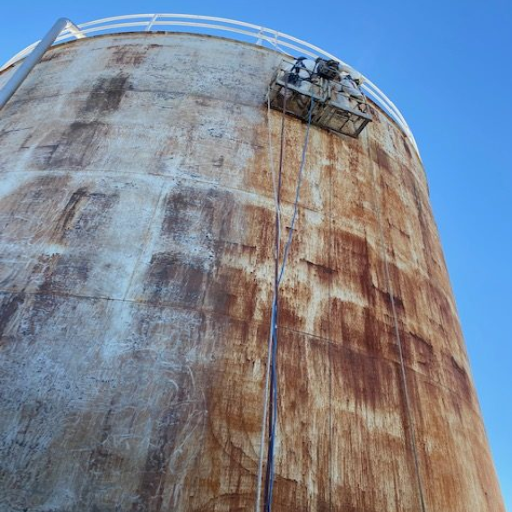
There are various ways to stop corrosion in steel tanks. Initially, protective coatings could be applied to isolate steel and corrosive agents, such as epoxy and polyurethane. The other method is to implement cathodic protection via sacrificial anodes or impressed cathodic current to avoid the electrochemical occurrence of corrosion. Maintenance and periodic inspections must also be deployed to catch and mend early signs of wear and failure. Furthermore, corrosion-resistant metals, tank liners, or some control over the tank’s environment could be chosen to lessen corrosion risks, such as moisture buildup and pH values. Following these approaches can ensure enhanced lifespan and make steel tank maintenance commercially viable in the long run.
Applying Protective Coatings and Paint
Protective coats protect steel tanks from corrosion and ensure their longevity. The coatings form a physical barrier isolating the steel surface from environmental factors: moisture, oxygen, and corrosive chemicals. The most common are epoxy coatings, which combine excellent adhesion, durability, and chemical resistance. Research suggests that steel tanks coated with epoxy may withstand harsh industrial conditions for up to 20 years when properly applied and maintained.
Next in terms of effectiveness are polyurethane paints that can withstand UV-intensive environments. The coatings increase the tanks’ corrosion resistance and aesthetic appeal by providing a smooth, glossy finish. To achieve the best results, applications are made in a few layers, including primer and topcoat layers.
Thermal spray coatings, which spray molten or semi-molten materials onto the steel surface, provide additional right days. This technology will remain unparalleled at places subjected to high temperatures or highly corrosive environments, protecting the rightful infrastructure from damage and increasing lifespan.
According to industry standards, surface preparation before coating application should also be considered necessary. Preparation methods provide the steel substrate free from rust, scale, and other contaminants to allow coating-substrate bonding. Research shows that if surface preparation is carried out correctly, the protective coatings’ performance will increase by 30%.
Advanced coating technologies and correct application techniques provide maximum protection and durability to steel tanks; hence, coating is a cost-effective, larger-scale corrosion prevention measure.
Using Cathodic Protection System
Cathodic protection systems, including tanks, pipelines, and marine equipment, are a well-established technique for preventing corrosion of steel structures. From the corrosion standpoint, these systems convert the metal structure into the cathode of an electrochemical cell, halting its corrosion.
Usually, there are two ways of cathodic protection systems: sacrificial anodes and impressed currents. Sacrificial anodes are made from highly active metals such as zinc, aluminum, and magnesium; anodes corrode in place of the protected structure. Researchers indicate that sacrificial anodes are capable of high performance in soil and water environments, and could provide protection for up to 20 years, depending on environmental conditions and maintenance.
An impressed current system, by contrast, uses an external power source to deliver a constant current to the protected structure. These are most suitable for large applications and give flexible output adjustments depending on the corrosion rate and environmental conditions. Based on detailed data, impressed current systems, if properly monitored and maintained with rectifiers, can increase the life of steel infrastructures for up to 40 years.
When used as part of an all-inclusive corrosion prevention strategy, including coatings and material selections, Cathodic protection can considerably reduce maintenance costs and downtime. Real-time monitoring tools also allow for proactive evaluation and optimization, improving long-term structural integrity and safety.
Implementing Regular Maintenance and Checks
Importance of Scheduled Inspections: Regular maintenance and checks are essential to mitigate potential risks and ensure the infrastructure’s life span. Scheduled inspections allow one to recognize corrosion, mechanical faults, or structural weaknesses earlier, thus minimizing costly repairs or replacement procedures. Industry studies confirm that routine maintenance on industrial pipelines and facilities can reduce repair costs by up to 40% and improve operational efficiency.
Higher-End Inspection Tools: The use of higher-end inspection tools, such as ultrasonic testing, magnetic flux sensing, and drone-based inspections, has changed how maintenance is conducted on a range of industrial installations. For example, data shows that drone inspections equipped with thermal cameras access hard-to-reach areas 50% faster than conventional methods, thus saving time and man-hours. These tools ensure accuracy and minimize personnel safety risks, as human exposure to potentially hazardous sites is limited.
Benefits of Proactive Maintenance: Proactive maintenance, represented by predictive analytics and condition monitoring, is getting a foothold in the industry. Research reveals that instances of unforeseen equipment failure in facilities practicing predictive maintenance dropped by an average of 30%. The result is a top-of-the-class level of reliability on which consistent production can be guaranteed, with more time-to-market for crucial components.
Training and Workforce Preparedness: Training and workforce development are necessary to maximize the effectiveness of maintenance programs. Research highlights the association between skilled teams trained in inspection technologies and maintenance standards with improvements in infrastructure system reliability. Ongoing education keeps technicians up to date with advancements, thus optimizing safety and efficiency.
What Are the Best Corrosion Protection Methods for Steel Tanks?
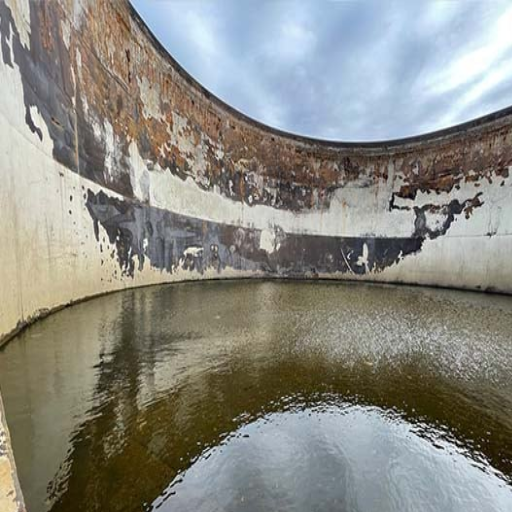
Various measures could effectively be taken to prevent corrosion of steel tanks. Protective coatings or paints are commonly applied for use, which are opacity-providing layers against moisture or any corrosive agent; the coatings include epoxy and polyurethane, among others. The cathodic protection is also a widely employed method; it may involve sacrificial anodes or alternative methods of current impressing to defend steel surfaces against corrosion. To prevent early corrosion, periodic check-ups on tanks need to be held so they can be repaired immediately. Other techniques include material considerations, with stainless steel or corrosion-resistant alloys chosen for increased life expectancy. Usually, the storm is made by combining two or more methods in given situations, as per operational and environmental conditions.
Comparing Different Coating Options
Several factors, such as performance, cost, and the environment, must be considered when assessing coating alternatives from a corrosion standpoint. Epoxy coatings are among the most sought-after choices due to their durability and resistance to chemical action and moisture. They form a very tight barrier against the passage of oxygen and water to the metal surface so that corrosion can be largely avoided. It is further stated that with the application and maintenance of epoxy coatings, longevity can be attained for about 20-30 years.
Polyurethane finishes have high resistance to UV rays and are flexible, so a good choice whenever an application will be subject to the outdoor environment. While also great for the shiny and smooth surface finish that is aesthetically pleasing, polyurethane coatings provide good corrosion resistance. This might prove more costly at the outset when compared to the other options.
Primers and coatings rich in zinc were known for their sacrificial protection properties. Such coatings form a protective barrier that isolates the substrate from the environment and cathodically protects the substrate metal, thereby slowing down the corrosion. Research has shown that zinc-rich coatings can keep steel structures from the corrosive effects for several decades, especially when combined with a suitable topcoat.
Recent developments have made waterborne coatings an environmentally friendly alternative to solvent-based coatings. Their low VOC emissions make them sustainable materials employed in various industries.
Finally, the choice of the coating system is preferably adjusted to the particular operational environment, considering climate, chemical exposure, mechanical wear, and budget constraints. Combining several layers, for instance, zinc-rich primer and epoxy/polyurethane topcoat, often results in better performance with extended life.
Exploring Sacrificial Anodes as a Solution
Sacrificial anodes are widely used in corrosion control, especially in metallic structures kept under water or in hostile environments. These anodes protect essential metallic components in a cathodic mode. The sacrificial anodes, typically made of zinc, aluminum, or magnesium, are instructed to corrode first, thereby saving the integrity of the protected structure.
Many factors affect the efficiency of a sacrificial anode in any situation. These include the type of environment, the structure’s material to be protected, and the selected anode material. To cite a few, aluminum anodes perform best in saltwater applications owing to their higher energy capacity and current output. In contrast, magnesium anodes serve well in freshwater systems because of their higher driving voltage value. The data show that when correctly selected and coupled with periodic maintenance, sacrificial anodes enhance the life span of civil infrastructures such as pipelines, ship hulls, and offshore platforms by decades.
Recent innovations have improved the existing level of efficiency. Nowadays, with the help of high-purity alloys and new design methodologies, wastage is reduced, and the coverage area of the protection zones is improved. Furthermore, in industries, sacrificial anodes are used with complementary protection systems, such as coatings, to meet performance requirements in highly severe corrosion environments. For instance, pipeline systems combine epoxy coating with magnesium anodes to ensure long-term protection under variable soil conditions.
Proper consideration of environmental and operational requirements in selecting anode material and system configuration continues to make sacrificial anodes an essential and effective corrosion control method in various industries.
Effectiveness of Epoxy and Glass Linings
Epoxy and glass linings are widely considered for industrial applications due to their excellent performance as corrosion and chemical resistance barriers to infrastructure. These durable, non-porous coatings protect surfaces and maintain the sanitary condition of industries, with water treatment facilities as an example. Epoxy linings are very resistant to chemicals, so they are often applied when materials face harsh chemicals or extreme pH levels. Glass linings are much more resistant to abrasion. They are hence preferred for applications involving high mechanical stress or abrasive substances.
Research has proven that when correctly applied and maintained, epoxy linings can double maintenance costs over 20 years by extending the lifespan of steel tanks and ducts. Laboratory tests attest to glass linings ensuring a 30-40% increase in equipment durability, mainly in abrasive slurry transport or high-temperature conditions. Increased imperviousness applies to both, considerably reducing the chances of leakage and contamination and ensuring the integrity of the associated system.
The combination of epoxy and glass lining produces a synergistic effect that offers chemical resistance from epoxy while granting glass mechanical strength. Thus, this hybrid solution is gaining acceptance in critical infrastructure protection and performance offerings in the most demanding environments.
How to Identify and Address Corrosion Issues Early?
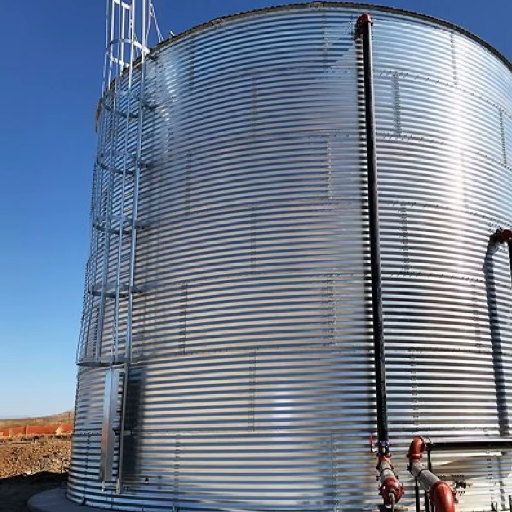
Perform regular periodic visual inspections to identify any possible early corrosion issues. Discoloration, pitting, and surface flaking are common signs of corrosion. Non-destructive testing methods such as ultrasonic testing or magnetic particle inspection may be used to search for concealed damage. Keep records of ambient conditions, including moisture content and pH values, to anticipate potential risks.
Where corrosion is concerned, start with cleaning and rust removal, possibly through abrasive means or chemical treatment. Coatings like paints, where use is possible, and linings, where suitable, will then be applied to protect from further corrosion. The affected parts must be replaced if the corrosion is severe to ensure safety and functionality. Establish a maintenance program for the long-term control of corrosion.
Signs of Corrosion to Watch Out For
Recognizing the early symptoms of corrosion helps avert further damage. Corrosion makes itself known via rusting, that reddish-brown or orange scraping substance appearing on certain metal surfaces. The onset of corrosion can also be inferred from the discoloration or tarnishing of certain metals, such as steel and copper. Pitting, tiny holes on the metal structure, is also a key indicator, since this kind of localized corrosion can significantly weaken structures over time.
Other things to be wary of include cracks in protective coatings like paint or sealants, through which moisture and air get into the base material. A powdery residue or whitish deposits, called efflorescence, could all be indicators of corrosion in metals such as aluminum. Warping and bending will confirm a more advanced stage, and a few steps away from immediate repair and replacement.
Industry researchers have presented evidence showing that corrosion costs the world upwards of $2.5 trillion per annum; hence, early diagnosis and prevention matter. Repairs against corrosion need constant inspections, and any changes in appearance or structural integrity need to be heeded.
Steps to Remove and Treat Corrosion
Identify the Affected Areas: Start by identifying all surfaces showing corrosion signs such as rust, discoloration, etc. Use a flashlight or magnifying glass to inspect hard-to-reach spots. Corrosion mainly originates in areas exposed to moisture, salts, or chemicals; hence, such spots must be prioritized during inspection.
Clean the Surface: It is vital to clean dirt, grease, and debris from the corroded surface using a degreaser or warm, soapy water. Proper cleaning will ensure the subsequent treatment is beneficial. Modern-day industrial practices hold that failure to clean can cause a 30% decrease in the efficiency of anti-corrosion coatings.
Remove Corrosion: Treat light or medium corrosion with abrasives such as sandpaper, wire brushes, or power tools with grinding discs. Chemical rust removers with phosphoric or oxalic acid can also dissolve rust. Studies have shown that chemical treatment can restore about 85% of the metal surface integrity when used correctly.
Neutralize the Site: Once corrosion removal is completed, neutralizing the surface to prevent further reaction is necessary. For example, baking soda and water can be mixed to counteract any acidic residues left behind by the rust removers. This method reduces the risk of further corrosion by halting the chemical processes leading to deterioration.
Apply Anti-Corrosion Coating: A coating of primer, paint, or rust inhibitor follows the cleaning and drying of the surface. The coatings are best for industrial usage if they contain zinc or epoxy, as these will give the most significant long-term resistance to moisture and environmental contaminants. With the latest technologies in protective coatings, durability has gone up such that, in optimum conditions, some of these coatings can protect up to 15 years.
Regular Checks: Set a maintenance schedule for inspections and treatment of any minor signs of corrosion that can reappear later. Research emphasizes that periodic maintenance can reduce long-term repair costs by up to 40%, making it the most preferred cost-effective maintenance strategy for preserving assets and infrastructure.
By following these steps in detail, a business or an individual can handle the risks from corrosion well, thus ensuring structural integrity and financial investments over time.
When to Replace or Repair a Steel Tank
Decision-making about steel tank replacement or repair depends mainly on significant aspects such as damage extent, tank age, and operational requirements. Repair can sometimes keep the tanker functional and extend its lifespan when damage is associated with minor oil corrosion, small leaks, or any component failure. Replacement, however, becomes the more feasible and cost-effective solution if there is any large-scale structural damage in the tank, larger-scale corrosion, or a recurrently problematic situation from a safety or efficiency perspective.
Furthermore, tanks that have been at or beyond the age limit since being designed may not conform to current safety codes or operation requirements and would, therefore, make a good long-term investment if replaced. Inspections are essential to understand the extent of depreciation and to conform it to industry standards. Ultimately, the cost-benefit analysis, operational needs expected in the future, and professional expert analyses should make the decision.
How Does the Environment Affect Steel Tank Corrosion?
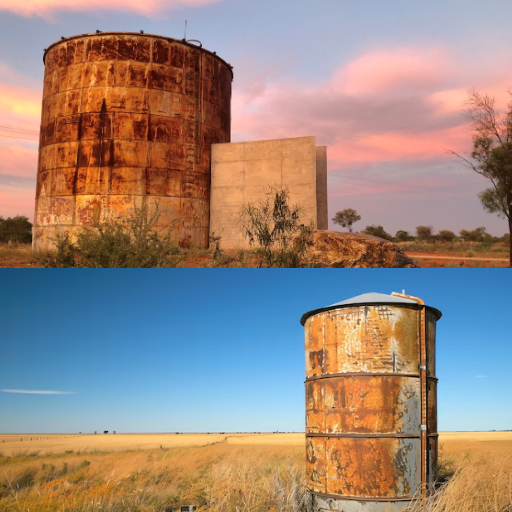
Corrosion in steel tanks is a prominent environmental parameter. Moisture, fluctuations in temperature, and the presence of oxygen all accelerate the formation of rust. Industrial pollutants, salt, or acidic conditions will also enhance the corrosive action. A tank will be subject to corrosion in a coastal or humid atmosphere due to the extra salt and moisture-laden air. Suitable upkeep, protective coatings, and environmental management are key to safeguarding and maximizing the operation of steel tanks.
Impact of Water and Moisture
Water and moisture are chief contributors to the corrosion of steel surfaces, along with oxygen and several other factors of the environment. Electrochemical reactions causing corrosion occur when moisture lingering on the steel surface acts as a conductive medium. Studies have shown that corrosion takes under much higher speed when the relative humidity exceeds 70% as a few molecules of water suffuse the metal surface creating a thin layer enabling salts and other contaminants to dissolve more readily and increasive corrosive action.
Coastal areas and industrial zones are particularly susceptible to corrosion, with salt and harsh airborne chemicals going hand in hand with moisture. Such corrosion is of the utmost importance to industries using steel tanks, pipelines, or other infrastructures in these regions, due to a study that reports corrosion can be five times faster in marine environments than in rural settings because of the high salinity present in the air.
One uses a range of other protective strategies to take care of the corrosiveness of water and moisture, including coating application of a high standard, maintenance work, and a cathodic protection system. Also, controlling environmental conditions and mitigating water-based corrosion are examples, such as reducing high humidity exposure by running dehumidifiers and shielding from direct contact with water. Water corrosion and prevention possibilities should be well understood to maintain steel tanks’ structural integrity and usefulness over time.
Role of Oxygen and Temperature
The Oxygen and temperature are crucial elements in the corrosive action of steel tanks. According to my understanding, the higher the amount of oxygen is, the greater the corrosion rate because oxygen is the agent that causes oxidation reactions. Similarly, temperature affects the corrosion rate because higher temperatures accelerate the chemical interaction and cause moisture evaporation, concentrating corrosive materials. By controlling these factors, i.e., restricting oxygen exposure by coatings and ensuring temperature stability, I believe it is possible to control the corrosion potential and thus increase the life of the tanks.
Managing Chemical Reactions in Tanks
Attention should be given to the choice of materials used in tank construction and the environment to which they are exposed to ensure the best control of chemical reactions in tanks. For instance, using materials resistant to corrosion will minimize chemical degradation that occurs with time. Of all such resistant materials, stainless steel and advanced composites are most commonly used in the industry. For example, specific stainless steel grades, resisting acidic or chloride-rich environments, will be best suited to storing highly reactive chemicals.
On the other hand, environmental conditions must be monitored and controlled at all times. Researchers found that a 10°F increase in temperature will double the rate of chemical reactions, thus increasing the rate of corrosion or damage to the process. Hence, temperature control devices such as heat exchangers or an insulation layer can be embedded within the tanks so that internal conditions remain constant. In conjunction with such temperature control, injecting inert gases such as nitrogen could blank out oxygen inside the tank to prevent oxidation reactions.
According to industry data, maintenance and coating can increase duration by approximately 60%. Lining with epoxy or polyurethane suggests a sound barrier is formed, keeping stored chemicals from direct contact with the tank walls. Coupled with periodic tank inspections using ultrasonic thickness testing or another suitable technology, operators can detect early signs of wear or corrosion and promptly address related issues.
By employing these proactive and scientifically proven measures in synergy, facilities can protect tanks from chemical reactions, ensuring operational safety and long-term financial savings.
Reference Sources
Corrosion in the Nigerian Oil Industry
Impressed Current Cathodic Protection (ICCP) for Storage Tanks
Electrochemical Properties of Stainless Steel in Hot Water Tanks
Frequently Asked Questions (FAQs)
Q: What are the leading causes of corrosion and rust in steel tanks?
A: Corrosion and rust in steel tanks are primarily caused by exposure to moisture, oxygen, and various chemicals. This can occur inside and outside the tank, especially if the protective coatings or seals are compromised. These factors are unavoidable in many industries, but proper maintenance and treatment can mitigate their effects.
Q: How can I prevent corrosion in my steel tank?
A: To prevent corrosion, regularly inspect your steel tank for signs of wear and damage, apply protective coatings, and ensure that any seals are intact. Consider using corrosion inhibitors and maintaining proper environmental controls, such as reducing humidity and controlling temperature. Implementing a reliable inspection schedule can help catch issues before they become serious.
Q: Is it necessary to empty the tank before applying protective coatings?
A: Yes, it is generally recommended that the tank be emptied before protective coatings are applied. This ensures a clean surface and allows the coating to adhere correctly to the bare metal, providing a more effective barrier against corrosion and rust.
Q: What role does blast cleaning play in corrosion prevention?
A: Blast cleaning is a process used to remove rust, old paint, and other contaminants from the surface of the steel tank. This process prepares the tank for applying protective coatings, ensuring they adhere properly and effectively protect against corrosion. It works well as a part of a comprehensive maintenance program.
Q: Can I seal my tank, or should I hire professionals?
A: While sealing your tank might seem like a task you can handle yourself, hiring professionals is often recommended to ensure the job is done correctly and safely. Professionals have the expertise and equipment necessary for reliable sealing, which is crucial for preventing leaks and prolonging the life of your tank.
Q: How often should I inspect my steel tank for signs of corrosion?
A: Regular inspections are key to maintaining your tank. Inspections should typically occur every few months depending on the environment and usage. More frequent inspections may be necessary for steel tanks under high pressure or in corrosive environments. Checking for signs of corrosion and rust can help prevent more serious issues.
Q: What is the difference between traditional coatings and modern solutions for preventing corrosion?
A: Traditional coatings, such as paints and tar-based products, provide a basic barrier against moisture and oxygen. Modern solutions often incorporate advanced materials and technologies, such as epoxy and polyurethane coatings, which offer superior adhesion and durability. These modern coatings are designed to withstand extreme conditions and provide longer-lasting protection.
Q: Is purchasing a new tank or maintaining an existing one more cost-effective?
A: The decision between purchasing a new tank and maintaining an existing one depends on several factors, including the extent of corrosion, the cost of repairs, and the age of the tank. Regular maintenance and timely repairs can significantly extend the life of a steel tank, making it a more cost-effective option than purchasing a new one. However, if the tank is extensively damaged or nearing the end of its lifespan, a new purchase might be more economical in the long run.
Q: Are there any government regulations regarding the maintenance of steel tanks?
A: Many industries are subject to government regulations regarding the maintenance and inspection of steel tanks, particularly those used for storing hazardous materials. These regulations are designed to ensure safety and environmental protection. Compliance with these regulations is crucial to avoid penalties and ensure the safe operation of your tanks.

